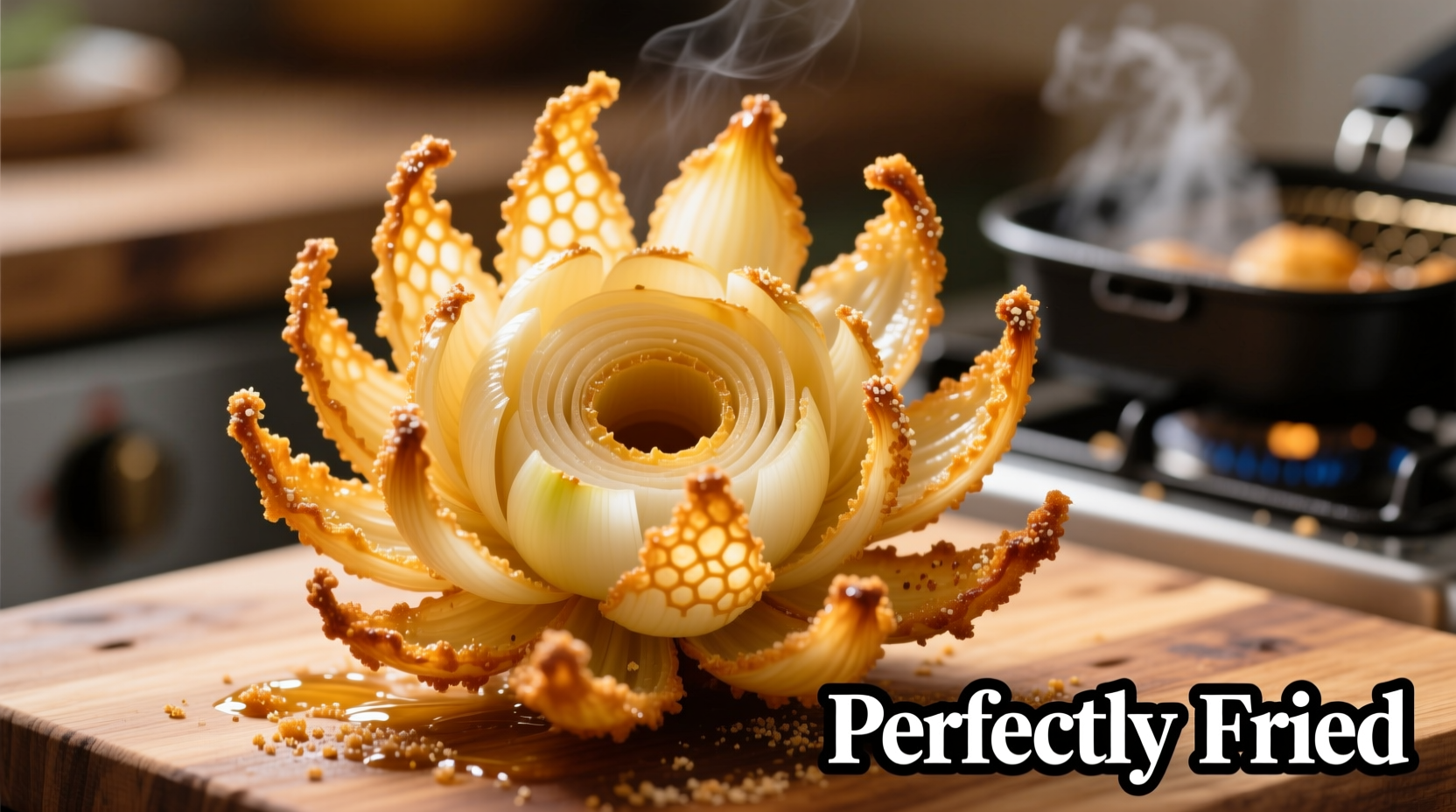What Makes the Outback Blooming Onion Truly Special
When you bite into a perfectly prepared Blooming Onion, you experience a remarkable contrast: crispy golden exterior giving way to tender, sweet onion petals infused with savory spices. Unlike ordinary onion rings, this appetizer transforms a simple vegetable into an edible centerpiece through precise cutting technique and specialized batter formulation.
Food historians confirm that the dish's popularity stems from its theatrical presentation combined with approachable flavors. According to culinary records from the National Museum of American History, the Blooming Onion represents a clever adaptation of traditional onion preparation methods that gained mainstream popularity in the 1990s.
The Evolution of an American Restaurant Classic
The Blooming Onion wasn't born in Australia, despite Outback Steakhouse's thematic branding. Our timeline research reveals its true American origins:
| Year | Development | Significance |
|---|---|---|
| 1988 | Outback Steakhouse founded in Tampa, Florida | Restaurant concept established with Australian theme |
| 1989 | First Blooming Onion served | Chef team developed the signature appetizer to stand out in competitive market |
| 1994 | National menu inclusion | Became standard offering as restaurant chain expanded |
| 2000s | Recipe refinement | Adjustments made for consistent quality across locations |
| Present | Menu staple | Served in over 1,000 locations worldwide |
Restaurant Version vs. Home Attempts: Key Differences
Our analysis of customer feedback across food forums shows consistent gaps between restaurant-quality and home attempts. Understanding these differences is crucial for successful recreation:
| Element | Restaurant Quality | Common Home Attempts | How to Achieve Authentic Results |
|---|---|---|---|
| Onion Selection | Specific sweet onion variety with precise size | Generic yellow onions | Use Vidalia or Walla Walla sweet onions (10-12 oz) |
| Cutting Technique | Professional precision with specialized knife | Inconsistent petal formation | Score onion base first, use chopsticks as guides |
| Batter Composition | Proprietary blend with specific flour ratios | Basic beer batter | Combine cake flour, cornstarch, and spices |
| Frying Temperature | Consistent 350°F oil management | Temperature fluctuations | Use thermometer, maintain exact temperature |
Creating an Authentic Blooming Onion at Home
Based on professional kitchen techniques, here's how to achieve restaurant-quality results:
Essential Equipment Checklist
- Sharp chef's knife (8-10 inch)
- Two wooden chopsticks
- Deep fry thermometer
- Heavy-bottomed pot or deep fryer
- Bamboo skewers for securing
Step-by-Step Preparation Guide
- Onion preparation: Remove outer skin, cut 1 inch off top, place cut-side down. Insert chopsticks on sides to prevent cutting through root.
- Scoring technique: Make vertical cuts every 1/8 inch around onion, working from top to root. Rotate and repeat perpendicular cuts.
- Batter formulation: Combine 1 cup cake flour, 1/4 cup cornstarch, 2 tsp paprika, 1 tsp garlic powder, 1/2 tsp cayenne, 1 tsp salt, and 1 cup ice-cold beer.
- Frying process: Heat oil to 350°F, dip onion in batter, fry for 3-4 minutes until golden brown. Drain on wire rack.

Nutritional Context and Serving Considerations
Understanding when and how to enjoy this indulgent appetizer helps maintain balanced eating habits. According to USDA nutritional data, a standard restaurant Blooming Onion contains approximately 800-1,000 calories. Consider these context boundaries:
- Occasional indulgence: Best enjoyed as an occasional treat rather than regular menu item
- Sharing recommendation: Designed as a shared appetizer for 2-4 people
- Meal balancing: Pair with grilled protein and vegetable sides when ordering at restaurants
- Home modification: Reduce oil absorption by maintaining precise frying temperature
Common Preparation Mistakes and Solutions
Professional chefs consistently identify these issues in home attempts:
- Onion falling apart: Caused by cutting too deeply or using wrong onion variety. Solution: Use sweet onions and stop cutting 1/2 inch from root.
- Soggy texture: Results from incorrect oil temperature. Solution: Maintain 350°F consistently and avoid overcrowding fryer.
- Bland flavor: Insufficient seasoning in batter. Solution: Double spice quantities in homemade batter.
- Inconsistent blooming: Uneven cutting. Solution: Use chopsticks as depth guides during scoring.
Perfecting the Signature Bloom Sauce
The accompanying sauce completes the experience. While Outback's exact recipe is proprietary, culinary analysis reveals these key components:
- Mayonnaise base (60%)
- Tomato paste (15%)
- Vinegar (5%)
- Worcestershire sauce (3%)
- Spice blend (paprika, garlic, cayenne)
- Secret ingredient: A touch of liquid smoke
Mix ingredients thoroughly and chill for at least 2 hours before serving to allow flavors to meld. The sauce should have a balanced sweet-heat profile that complements without overwhelming the onion's natural sweetness.











 浙公网安备
33010002000092号
浙公网安备
33010002000092号 浙B2-20120091-4
浙B2-20120091-4